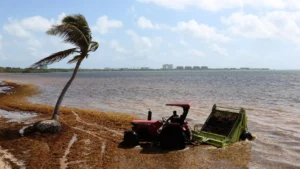Greater Idaho: A Vision for Expanding State Borders

In recent years, an intriguing movement has gained momentum in the Pacific Northwest of the United States. The concept of “Greater Idaho” has emerged as a proposal to expand the borders of existing states and create a new jurisdiction. This audacious idea has attracted attention and sparked debates about regional identity, political representation, and the boundaries of governance. In this article, we will discuss the concept of Greater Idaho, exploring its origins, motivations, potential implications, and controversies surrounding it.
Introduction
Greater Idaho is a proposed expansion of the existing borders of Idaho to include parts of neighboring states such as Oregon, Washington, Montana, and even California. Proponents of this movement argue that these areas share cultural, political, and economic similarities with Idaho and would benefit from being incorporated into a single-state entity. The concept has gained traction among those who feel disenfranchised by the policies and politics of their current states and seek greater alignment with Idaho’s values and governance.
The Origins of Greater Idaho
The Greater Idaho Movement originated in rural and conservative communities in eastern Oregon and northern California. These regions have long felt a disconnect from the more liberal urban centers in their respective states. The idea gained prominence when Mike McCarter, a resident of rural Oregon, started the “Move Oregon’s Border” initiative in 2018. McCarter envisioned a new state called Greater Idaho, encompassing parts of Oregon, Idaho, and eventually other neighboring states.
Motivations Behind the Movement
Supporters of Greater Idaho have various motivations driving their advocacy for expanded state borders. One key motivation is the perception that the existing states are dominated by urban centers, which often differ in political ideology and policy preferences from rural communities. Proponents argue that a new state encompassing these rural areas would better represent their interests and values.
Economic considerations also play a role in the movement. Some proponents believe that Greater Idaho would provide greater opportunities for economic growth, resource utilization, and development. They argue that the new state could benefit from the natural resources, agricultural land, and untapped potential present in the proposed regions.
Potential Implications
If the Greater Idaho movement were to gain traction and succeed, it would have significant implications for the affected states and the region as a whole. The creation of a new state would require a complex process involving negotiations, legal challenges, and potentially even congressional approval.
From a governance standpoint, the incorporation of additional territories into Idaho would necessitate the establishment of new infrastructure, services, and administrative systems to effectively govern the expanded jurisdiction. It would also require redrawing political boundaries, potentially altering electoral districts and representation.
Controversies and Opposition
Unsurprisingly, the Greater Idaho proposal has faced opposition and controversy. Critics argue that the movement is fueled by partisan politics and an attempt to create a more conservative state by annexing predominantly rural areas. They express concerns about the potential loss of political diversity and the marginalization of progressive voices within the affected states.
Moreover, opponents question the feasibility and practicality of such a massive territorial expansion. They argue that the economic, logistical, and administrative challenges would be overwhelming, making the realization of Greater Idaho highly unlikely.
The Future of Greater Idaho
While the Greater Idaho movement has gained attention and support from certain communities, its ultimate realization remains uncertain. The proposal faces significant legal, political, and practical obstacles that need to be addressed for it to become a reality. Additionally, it would require substantial public support and consensus among the affected regions, which may prove challenging to achieve.
Conclusion
The concept of Greater Idaho presents a thought-provoking vision for expanding state borders in the Pacific Northwest. Supporters argue that it would provide better representation for rural communities, align with shared values, and potentially lead to economic benefits. However, the proposal also faces opposition, with concerns about political diversity, feasibility, and the potential marginalization of progressive voices. The future of Greater Idaho remains uncertain, but it serves as a testament to the complexities of governance and the enduring debates surrounding regional identity.
FAQs
Would Greater Idaho affect existing state borders?
Yes, the proposal seeks to expand the borders of Idaho to include parts of neighboring states.
What are the motivations behind the Greater Idaho movement?
Supporters seek better representation for rural communities, alignment with shared values, and potential economic benefits.
How likely is the realization of Greater Idaho?
The proposal faces significant legal, political, and practical obstacles, making its realization uncertain.
Are there any controversies surrounding the Greater Idaho movement?
Yes, critics argue that it is politically motivated and raises concerns about political diversity and the marginalization of progressive voices.
What would be the implications of creating Greater Idaho?
It would require negotiation, redrawing boundaries, and establishing new governance systems, with potential impacts on representation and electoral districts.




